Canceled SpaceX Projects: Falcon Rocket with a Reusable Upper Stage
We’re bringing you another installment of our series of articles about SpaceX and their canceled projects. Check out our previous installments about Falcon Heavy crossfeed and F9R-Dev2! This time we’ll take a look at reusable Falcon upper stage.
Elon Musk has discussed his desire for full reusability of the Falcon 9 on multiple occasions. Nowadays, reusing a rocket’s first stage is a common occurrence for SpaceX. Fairing recovery also seems to be close to being solved, but second stage reusability is a tough nut to crack even for SpaceX, because of its velocity being much higher than that of the first stage. Over the years, Elon Musk has played with the idea of making Falcon’s second stage reusable but it never materialized. Sadly, development of this new method has been, as confirmed by Musk in a 2018 tweet, completely abandoned because of more pressing matters such as Starship development and testing. In this article, we aim to shine some light on Musk’s past statements about Falcon’s second stage reusability and explain why it is such a difficult task.
In 2011, SpaceX published an animation that unveiled an ambitious plan for full Falcon 9 reusability. The presented vision of a first stage performing a propulsive landing came true in December 2015, when a Falcon 9 booster successfully landed for the first time. The 2011 video also showed a propulsive landing of the Dragon spacecraft, which, while technically possible, was later abandoned for various reasons. For now, all Dragon spacecraft will land in the ocean using the conventional parachute method. In this article we want to focus on a whole different part of the rocket, the upper (second) stage. In the old SpaceX animation, the second stage reentered the atmosphere using a heat shield and then proceeded to land on solid ground:
Since the release of this video, SpaceX has focused on reusing the first stage. It accounts for about 60% of the entire rocket’s cost and is technically easier to reuse because of its velocity being far lower than the second stage, thus negating the need for a heat shield. Initial attempts to land the first stage began in September 2013, and after several explosive failures, the first successful landing came at the end of 2015 during the Orbcomm-2 mission. SpaceX then quickly got to a point where landing the first stage was considered a mostly routine part of the launch. Elon Musk then resumed his plans to reuse the upper stage to make Falcon 9 and Falcon Heavy fully reusable rockets.
Recovering the second stage is much more complicated than the first stage, which is the main reason the project was eventually abandoned. The main problem is that unlike the first stage, the second stage needs to achieve orbital velocity to complete its mission. Orbital velocity is roughly 5 times higher than the speed reached by the first stage. That’s a lot of energy that the second stage then has to somehow get rid of before reentering the atmosphere, or else it would burn up.
One option is to reignite the engine in the opposite direction and shave off at least part of the velocity. But this requires a lot of fuel, which is okay when landing the massive first stage, but the second stage is much smaller and has way less fuel. A more cost-effective way to decelerate is using the atmosphere to brake during reentry. It doesn’t require any fuel, but it produces massive amounts of thermal energy which needs to be dissipated to prevent the stage from burning up. That’s why the stage would need a heat shield. In the video above, the second stage has some kind of a heat shield on its tip. SpaceX has plenty of experience with heat shields – their Dragon spacecraft has an ablative shield made of PICA-X, so it’s theoretically possible to equip the second stage with something similar.
Let’s say that, thanks to the heat shield, the second stage survives atmospheric reentry without any damage. Now what? The stage is still moving at hypersonic speeds and needs to land somehow. Parachutes are an option, but they are heavy, inaccurate and impractical because the second stage would be damaged when landing on land. Parachutes can be used to land in the ocean, but sea water is very corrosive, so water landings would also damage the stage.
With parachutes ruled out, the only conceivable option is to perform a propulsive landing similar to how the first stage is recovered. At first glance, it’s exactly the same technique that SpaceX has already mastered with the booster, so it should be a piece of cake, right? Not quite. The Merlin engine is quite powerful and the almost empty second stage is rather light (about 5 tons). That means the stage would not only decelerate too quickly and abruptly after engine ignition (which would lead to very high G forces), but it would eventually start ascending again, away from the landing zone.
The first stage has the same problem, although it’s several times heavier than the second stage and only one engine (or three) out of nine is used for landing. The engine provides so much thrust that after slowing the empty stage down it would begin to propel it upwards again, if left burning. Therefore, the landings need to be perfectly calculated, timed and executed so that the stage reaches 0 m/s at the exact same time it makes contact with the landing pad. This is a very demanding maneuver that is achieved through advanced algorithms as well as the Merlin’s ability to reduce or increase thrust in a wide range as needed. Such a landing maneuver would be extremely difficult, if not impossible, for the small and light second stage.
That’s not the only problem. The second stage’s Merlin engine differs from the first stage’s Merlin engines in many ways. It is optimized for vacuum operation, while the first stage engines are designed for atmospheric flight. The most noticeable difference is the vacuum engine’s engine nozzle, which is much larger and more fragile than that of the atmospheric Merlin used on the first stage. Passing through the atmosphere would almost certainly tear the nozzle off, either due to the pressure of the oncoming air or as a result of the vacuum optimized engine being ignited in the atmosphere. Landing using the second stage using the main vacuum engine is therefore unrealistic. However, the 2011 video shows that SpaceX had already planned something else.
The plan seems to have been to retract the second stage engine inside the stage to protect the fragile nozzle when returning to the surface. Subsequently, it can be seen that the stage would indeed perform a propulsive landing, but using secondary engines located around the Merlin. Perhaps SpaceX would’ve utilized the SuperDraco engines that are currently being used for Crew Dragon’s abort system. The SuperDraco has a thrust of 73 kN which would be more than sufficient to land an almost empty upper stage.
So in order to accomplish a second stage propulsive landing, SpaceX would have to equip the second stage with at least a heat shield, additional SuperDraco engines, landing legs, and some kind of a system to protect the fragile vacuum engine (alternatively, there could be a mechanism that would jettison the nozzle before reentry). Elon Musk said on Twitter that it was definitely possible to get the second stage back and was „just a question of how much weight we need to add“ (meaning the extra weight of a heat shield, additional engines and other hardware).
Recovering the second stage is certainly technically possible, but every gram that SpaceX adds to the second stage to make it recoverable would translate into reducing the maximum payload capacity of the entire rocket. Theoretically, second stage recovery is much more viable with the Falcon Heavy rocket, which boasts such a great payload capacity that no customer will likely fully utilize it. This excess capacity could make second stage recovery possible, as the added weight of recovery hardware would no longer a problem.
In April 2017, Musk said that he was considering performing a second stage recovery attempt during the Falcon Heavy demonstration mission. This attempt did not take place in the end, but it showed that Elon was still playing around with the idea of second stage reusability. This was confirmed by Gwynne Shotwell in the fall of 2017 when she said that SpaceX would attempt a soft sea landing with the Falcon 9 upper stage in 2018. However, she added that the aim would be primarily to obtain valuable data for the development of future rockets and that reusing the upper stage was no longer planned.
On the other hand, Musk announced in an April 2018 tweet that SpaceX would attempt to recover the upper stage from orbit using a giant balloon. He explained that the advantages of the balloon were that it could maintain its shape at supersonic speeds and it would reduce ballistic coefficient by two orders of magnitude. This means that it would allow significant deceleration utilizing aerodynamic drag. Musk did not exactly specify what kind of balloon he was talking about and how it would have been used, but there were speculations about using a ballute. It’s a type of braking balloon optimized for high altitudes and supersonic speeds.
Elon added that the upper stage would then “land on a bouncy house”. Sounds familiar? That’s because SpaceX originally planned to land payload fairings on something that Elon called a bouncy house. In another tweet, Elon indicated that a ship similar to Mr. Steven (now called Ms. Tree), which is currently used for catching Falcon’s payload fairings, might also be used to catch the second stage.
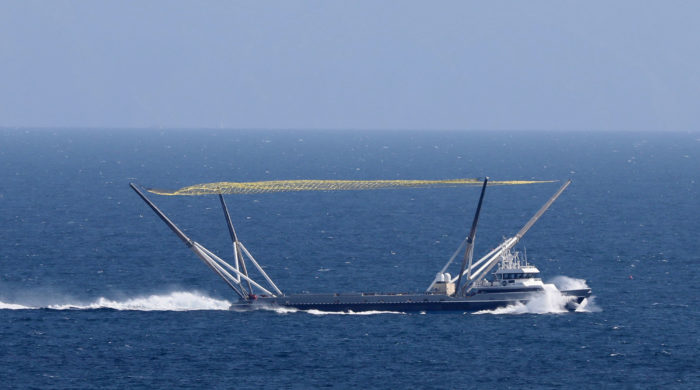
The SpaceX fairing catcher boat Mr Steven is doing it’s first day of sea trials off Pt Fermin in San Pedro after being fitted with new arms. The new arms support a much larger net to recover the fairings from SpaceX launches. Photo By Charles Bennett
As usual, things were subject to change. In November 2018, Musk introduced a revised plan. SpaceX would replace the Falcon 9’s upper stage with a scaled-down version of the upcoming BFR spacecraft to form a “miniBFR”. This step was meant to accelerate the development of the full-sized BFR. However, just 10 days after the announcement of the miniBFR plan, Musk wrote on Twitter that SpaceX no longer plans to upgrade the Falcon 9 for full reusability, and would instead focus on the development of the full-sized BFR (now called Starship).
Whichever way you slice it, recovering Falcon’s upper stage would be a difficult task requiring significant modifications to the rocket. SpaceX eventually decided that it would probably make no sense given the speed of development of the fully reusable Starship and the relatively low second stage cost (roughly 20% of the Falcon 9 price, even less with Falcon Heavy). Unless SpaceX encounters insurmountable problems during the development of Starship, which is meant to eventually replace both Falcons and Dragons over time, we will probably never see a reusable second stage.
This article was originally published in Czech by Petr Melechin and then translated into English by Vlastimil Švancara and Max Klimeš.
Previous installments of Canceled SpaceX Projects:



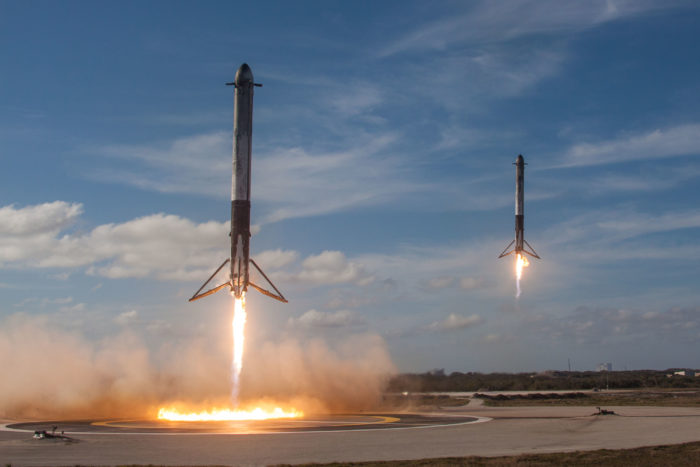
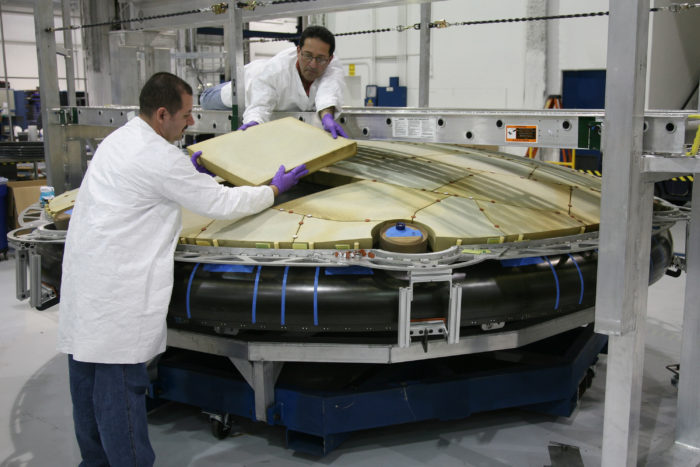

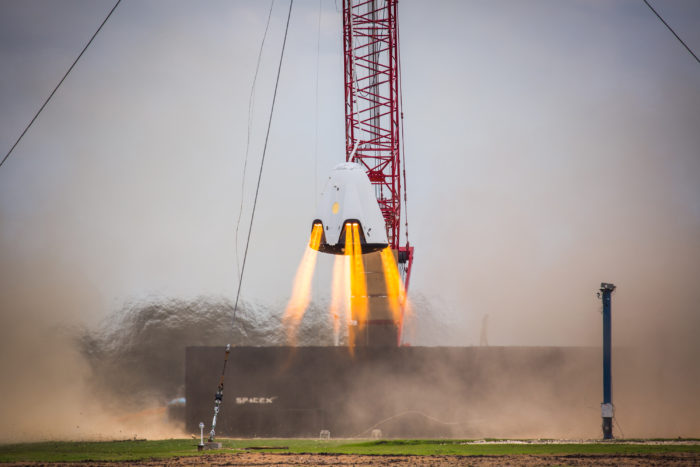
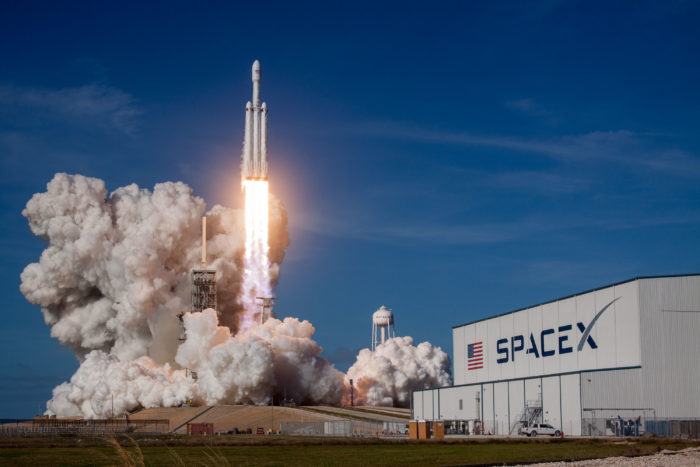

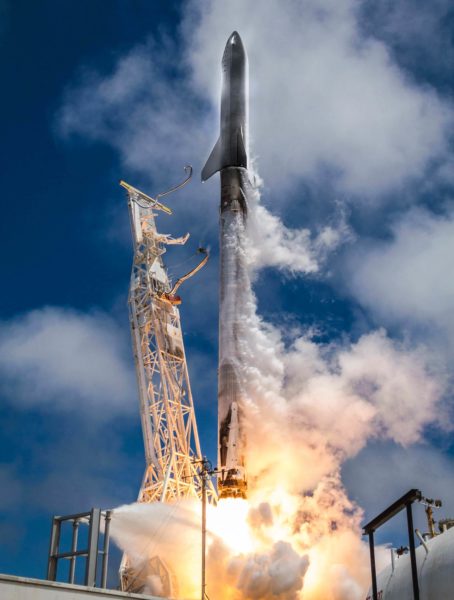

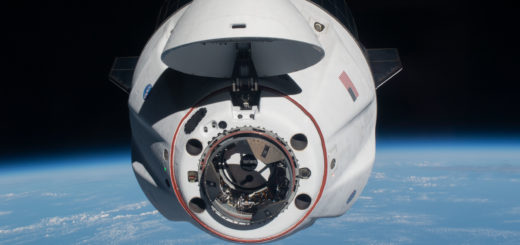
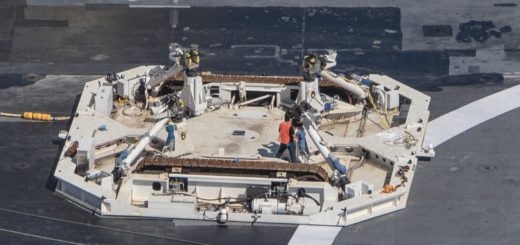
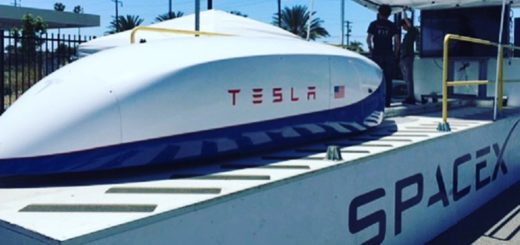
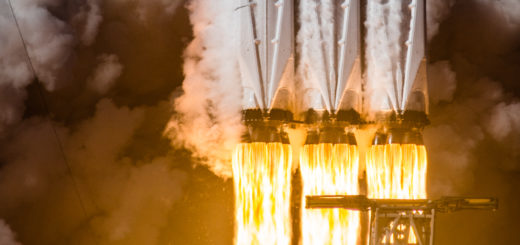
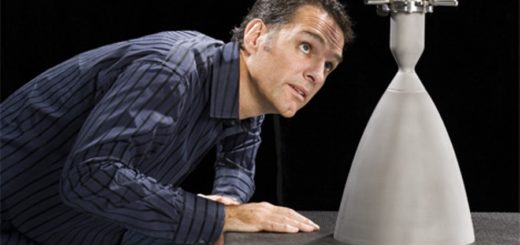

If recovering a second stage is an economic question,
Why not allow the spent stage 2 modules collect and orbit until enough of them can be returned to earth together?
So, for instance if a current stage 1 Falcon booster is economical for re-use because it has 9 merlin engines, would it make sense to return 9 stage 2 modules, each with a single engine all together in one mission?
Perhaps it would require a special mission that would have all necessary items necessary to bind together the stage 2 modules, or depending on what is deemed necessary could be a “piggy back” payload.
Perhaps spent 2nd stages could be gathered together and assembled into a useful space station structure? To do this, allow the 2nd stage enough fuel on its own to reach a stable parking orbit.
So what happens to the vacuum engine? Is it left in orbit? does that orbit decay? Is there enough fuel for a controlled burn into a decaying control reentre?
The upper stage is usually deorbited by doing a final deorbit burn at some point after payload deployment. But on some missions, there isn’t enough propellant left for the deorbit burn. In those cases the second stage is left in orbit and will eventually deorbit passively after months or even years.